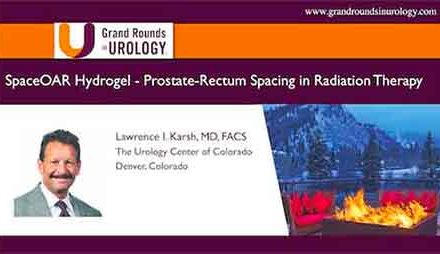
PCa Commentary | Volume 203 – July 2025
Posted by Edward Weber | July 2025
A PRIMER: PROTACs (Proteolysis Targeting Chimeras) – Drugs That Specifically Target the Androgen Receptor for Destruction
Prologue: The first issue of the PCa Commentary, October 1, 2002, featured the pivotal importance of the androgen receptor in all phases of prostate cancer… and the androgen receptor’s significance continues today.
Background:
Research in 1941 by the physiologist Charles Higgins first identified that prostate cancer develops and is driven by testosterone (T) activating the androgen receptor. And ever since, the management of the disease has involved inhibiting this activation by suppressing it with LHRH agonists (e.g., Lupron and others), LHRH antagonists (e.g., Firmagon or Relugolix), and more recently, with anti-androgens (e.g., Xtandi, Nubeqa, etc.) and the androgen synthesis inhibitor, Zytiga. Disease suppression is achieved by all these therapies, sometimes with dramatic PSA reductions, but unfortunately, the effect is often short-lived. Rapid resistance to androgen deprivation develops because of various mechanisms over months to several years, or much longer for fortunate men. Prolonged use of hormone suppressors is associated with considerable adverse effects. Even short courses of 4 – 6 months carry significant toxicity and require months after discontinuation to achieve a return of testosterone to baseline levels.
One mechanism for the development of resistance to androgen deprivation is the poorly understood disease state termed cellular “dormancy” (senescence). Although ADT causes the death of many cells, others are only induced into dormancy, in which they are metabolically active but not proliferating — a state of cell-cycle arrest. In this condition, they escape immune surveillance but secrete growth factors promoting progression and therapy resistance. ADT-induced senescence may last for only a short time or persist for years, with the cells later reemerging into the cell cycle resistant to future treatment.
What If the Androgen Receptor Could Be Degraded and avert developing senescence, progressive mutations, and resistance? Enter PROTACs, a promising approach to overcoming treatment resistance.
In brief: PROTACs (Proteolysis Targeting Chimeras) are orally administered drugs that target specific intracellular proteins — in this case, the androgen receptor. A PROTAC tags the AR for destruction by inducing the intracellular unit (the ubiquitin-protein ligase (E3) complex) to conjugate with the AR and guide it into the proteasome (essentially the cell recycling center for damaged or unneeded cells). In the proteasome, it is degraded. Remarkably, when this operation is complete, the PROTAC/E3 complex is released from the proteasome and can sequentially degrade about 400 additional AR molecules.
The PROTAC ARV110 (Bavdegalutamide, made by Arvinas Inc.) is the first prostate cancer-specific PROTAC. It achieves its specificity by ligating to the prostate cancer’s PSMA surface protein, then is internalized, joins with the AR, and deposits the AR into the proteasome. PROTACs are termed “chimeras” because of the bifunctional linkage of the E3 ligase-binding domain with the AR-binding domain. ARV-110 is currently in clinical trials (NCT0388612).
Detail: a bit of background
As prostate cancer therapy progresses, a variety of mutations in the AR develop, generating resistance to treatment. One particularly significant variant is AR mutant AR-V7, which lacks the ligand-binding pocket where testosterone and anti-androgen function. Cancers carrying ARv7 are self-actuating, independent of activation by T and unaffected by anti-androgens. They are aggressive and resistant to therapy. The AR-v7 moiety develops later in cancer progression after multiple treatments. While PROTACs do not directly degrade the molecule AR-V7, they do inhibit malignant cells that express AR-V7. Multiple AR Degraders are currently in development to attack other proteins promoting prostate cancer progression.
PROTACs and Senescent Cells: (PROTACs are “senolytic” drugs capable of eliminating senescent cells.)
PROTACs are being investigated for their potential to target and eliminate senescent cells that are in growth arrest. But a paradox develops: whereas chemotherapy and hormone therapy induce senescence and divert cells from malignant progression, this state of cell cycle arrest allows cells to remain dormant and later reemerge and contribute to metastasis and therapy resistance. The current investigation is seeking to determine how to combine chemotherapy and hormone suppression therapy with a PROTAC to prevent the diversion of cells into dormancy. (Discussed in “Targeting senescence, an anticancer therapy,” Bousset 2022 Mol Oncol 2022).
Dormant metastatic cells in bone marrow, for example, can be identified as dormant by RNA sequencing, cell proliferation markers, epigenetic profile, and others.
Early Results of Clinical Trial NCT0388612 (Reported at ASCO, 2022, by Gao et al)
The Gao study subdivided 195 heavily pretreated prostate cancer patients with metastatic castration-resistant PC into groups with specific AR mutations. The commonest mutation was ART878X/H875Y, occurring in 13%. This mutation is a driver of resistance to AR therapy and is particularly unfavorable since it converts Zytiga and Xtandi from suppressors to promoters. All men were treated with the PROTAC ARV-110. In this small group, 46% of men had >50% PSA decline and 57% a PSA30 decline. The 8 men treated earlier in their disease showed a PSA50 response of 75%. “Additionally, PSA declines of 50% or greater were seen across all biomarker-defined subgroups, including wild-type (no AR mutations) in fewer pre-treated patients.”
BOTTOM LINE: … And this is just the beginning of intense research on PROTACs with many different studies trying to identify the optimal niche for this promising treatment.
Your comments and requests for information on a specific topic are welcome e-mail ecweber@nwlink.com.
Please also visit https://prostatecancerfree.org/prostate-cancer-news for a selection of past issues of the PCa Commentary covering a variety of topics.
“We appreciate the unfailing assistance of the librarians at Providence/Swedish.”
ABOUT THE AUTHOR
Edward Weber, MD, is a retired medical oncologist living in Seattle, Washington. He was born and raised in a suburb of Reading, Pennsylvania. After graduating from Princeton University in 1956 with a BA in History, Dr. Weber attended medical school at the University of Pennsylvania. His internship training took place at the University of Vermont in Burlington.
A tour of service as a Naval Flight Surgeon positioned him on Whidbey Island, Washington, and this introduction to the Pacific Northwest ultimately proved irresistible. Following naval service, he received postgraduate training in internal medicine in Philadelphia at the Pennsylvania Hospital and then pursued a fellowship in hematology and oncology at the University of Washington.
His career in medical oncology was at the Tumor Institute of the Swedish Hospital in Seattle where his practice focused largely on the treatment of patients experiencing lung, breast, colon, and genitourinary cancer and malignant lymphoma.
Toward the end of his career, he developed a particular concentration on the treatment of prostate cancer. Since retirement in 2002, he has authored the PCa Commentary, published by the Prostate Cancer Treatment Research Foundation, an analysis of new developments in the prostate cancer field with essays discussing and evaluating treatment management options in this disease. He is a regular speaker at various prostate cancer support groups around Seattle.




